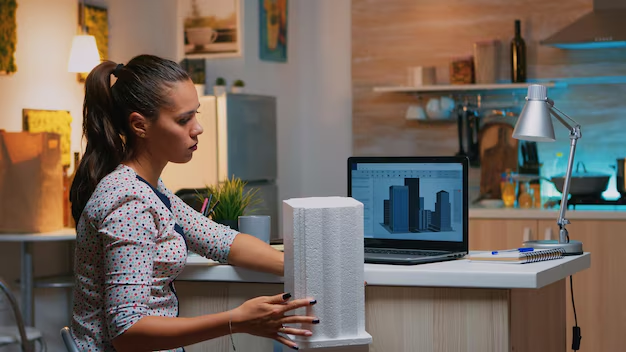Vmware pro homeassistant virtualize intel vt-x/ept amd-v/rvi

How to Virtualize Home Assistant Using VMware Pro with Intel VT-x/EPT and AMD-V/RVI
Virtualizing Home Assistant (HA) with VMware Workstation Pro can enhance the flexibility and scalability of your smart home setup. By leveraging advanced virtualization technologies like Intel VT-x/EPT (Extended Page Tables) and AMD-V/RVI (Rapid Virtualization Indexing), you can run Home Assistant as a virtual machine (VM) on your host system, providing performance optimization and increased compatibility for your smart home automation tasks. This guide will walk you through the process of setting up VMware Pro with Intel and AMD virtualization technologies to virtualize Home Assistant.
1. Understanding Home Assistant and VMware Pro
Home Assistant is an open-source home automation platform that focuses on privacy and local control. It runs on various platforms, but virtualizing it allows you to take advantage of your computer’s resources and manage multiple virtual machines (VMs) simultaneously.
VMware Workstation Pro is a powerful desktop virtualization software that allows you to run multiple operating systems on a single host computer. With its support for both Intel VT-x/EPT and AMD-V/RVI technologies, it can help ensure efficient, low-overhead virtualization, especially for resource-intensive applications like Home Assistant.
2. Requirements for Virtualization
Before you begin the virtualization process, make sure your system supports the necessary hardware features for Intel and AMD virtualization.
- Intel Processors: Ensure that Intel VT-x (Intel Virtualization Technology) and EPT (Extended Page Tables) are enabled in your system’s BIOS/UEFI settings. These technologies provide hardware-assisted virtualization support.
- AMD Processors: For AMD systems, you need to enable AMD-V (AMD Virtualization) and RVI (Rapid Virtualization Indexing) in the BIOS/UEFI.
- VMware Workstation Pro: Download and install VMware Workstation Pro (or VMware Player if you’re using a free version).
3. Enable Intel VT-x/EPT or AMD-V/RVI in BIOS/UEFI
To make sure that Intel VT-x or AMD-V is enabled on your system, you need to access your system’s BIOS/UEFI settings.
- For Intel Systems:
- Restart your computer and enter the BIOS by pressing the required key (usually
DelorF2). - Navigate to the CPU Configuration or Advanced tab.
- Ensure that Intel VT-x and Intel EPT are enabled.
- Save the changes and exit.
- Restart your computer and enter the BIOS by pressing the required key (usually
- For AMD Systems:
- Restart your computer and enter BIOS/UEFI settings.
- Look for AMD-V or SVM Mode (Secure Virtual Machine).
- Enable these options along with RVI (Rapid Virtualization Indexing) if available.
- Save the changes and exit.
4. Install VMware Workstation Pro
If you haven’t already installed VMware Workstation Pro, here’s how to do it:
- Download the VMware Workstation Pro installer from the VMware website.
- Run the installer and follow the on-screen instructions to complete the installation.
- Once installed, launch VMware Workstation Pro.
5. Create a Virtual Machine for Home Assistant
Now that VMware is ready and your system supports hardware virtualization, you can create a VM for Home Assistant.
- Open VMware Workstation Pro and click on Create a New Virtual Machine.
- Select “Typical” for the configuration type and click Next.
- Choose Installer disc image file (iso) and browse to select the Home Assistant OS ISO file.
- Select the operating system type (e.g., Linux), and then choose the version of Home Assistant OS that matches your system (e.g., Ubuntu or Debian).
- Assign Memory: Allocate sufficient RAM to the VM, typically at least 2GB for smooth performance.
- Create a Virtual Disk: Allocate at least 32GB of virtual hard drive space for Home Assistant.
- Finish the Setup: Review your settings, and click Finish to create the VM.
6. Enable Hardware Virtualization in VMware
To ensure that Intel VT-x/EPT or AMD-V/RVI is used within VMware, you need to configure your VM settings:
- Edit Virtual Machine Settings: Select the VM you created for Home Assistant in VMware Workstation Pro.
- Processor Settings: Under the Processors tab, enable Virtualize Intel VT-x/EPT or AMD-V/RVI.
- Make sure the option for Virtualize Intel VT-x/EPT or AMD-V/RVI is checked. This ensures that the hardware acceleration features are enabled for the virtual machine.
- Save Changes.
7. Install Home Assistant in the Virtual Machine
- Power On the VM: Start the virtual machine you created for Home Assistant.
- Home Assistant Installation: Once the VM boots from the ISO, follow the installation prompts to install Home Assistant on the virtual machine.
- Once installed, configure Home Assistant based on your preferences and connect it to your smart devices.
8. Optimize Performance and Troubleshooting
Virtualization can introduce overhead, but with Intel VT-x/EPT or AMD-V/RVI, your system should perform optimally. Here are some tips to further optimize performance:
- Adjust VM Resources: If Home Assistant is running slowly, you can adjust the CPU and RAM allocation in VMware Workstation Pro’s VM settings.
- Use Bridged Networking: Set up bridged networking for your VM to ensure Home Assistant can connect to your local network and interact with smart devices seamlessly.
- Enable 3D Graphics: If your Home Assistant setup requires advanced graphical interfaces (e.g., dashboards), enabling 3D graphics in VMware might help improve performance.
9. Access Home Assistant on VMware
Once Home Assistant is up and running, you can access it via the web interface. Open a browser and enter the IP address of your virtual machine, followed by the appropriate port number (usually 8123).
For example:
http://<VM-IP>:8123
From here, you can begin configuring your Home Assistant platform and integrating it with your smart devices.
Conclusion
By virtualizing Home Assistant on VMware Workstation Pro with Intel VT-x/EPT or AMD-V/RVI, you can take advantage of advanced hardware acceleration for optimal performance. This setup offers flexibility and scalability for managing your smart home automation system, making it easier to monitor, control, and extend your Home Assistant environment.



